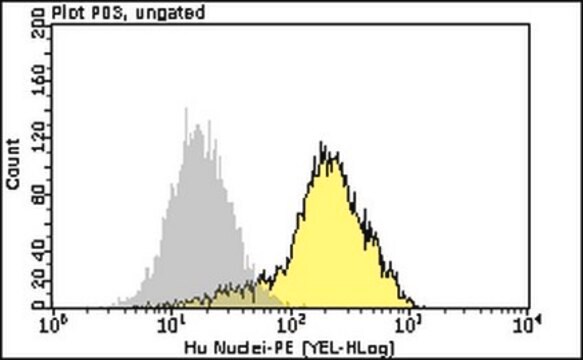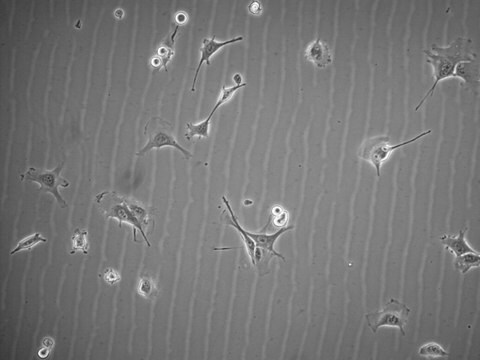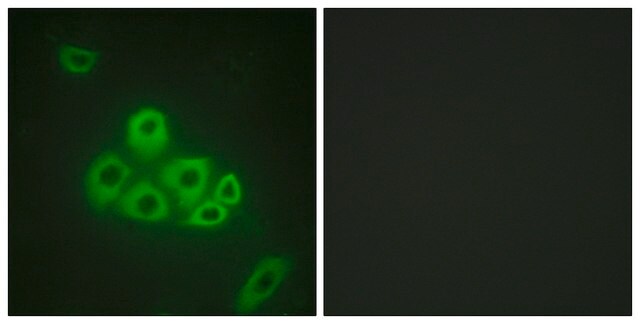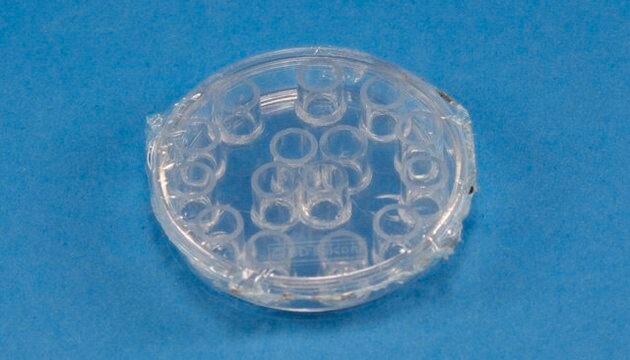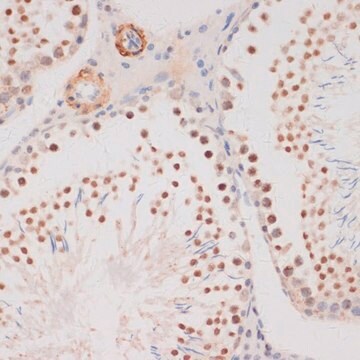SCC235
YUMM3.2 Mouse Melanoma Cell Line
Mouse
Sinonimo/i:
Yale University Mouse Melanoma 3.2 cell line, Yale University Mouse Melanoma cell line
About This Item
Prodotti consigliati
Nome del prodotto
YUMM3.2 Mouse Melanoma Cell Line,
Origine biologica
mouse
Livello qualitativo
Confezionamento
vial of ≥1x10^6 vial
Produttore/marchio commerciale
Millipore
tecniche
cell culture | mammalian: suitable
Condizioni di spedizione
liquid nitrogen
Temperatura di conservazione
−196°C
Descrizione generale
Applicazioni
- Each vial contains > 1X106 viable cells.
- YUMM3.2 cells are tested negative for infectious diseases by a Mouse Essential CLEAR panel by Charles River Animal Diagnostic Services.
- Cells are verified to be of mouse origin and negative for interspecies contamination from rat, chinese hamster, Golden Syrian hamster, human and nonhuman primate (NHP) as assessed by a Contamination CLEAR panel by Charles River Animal Diagnostic Services.
- Cells are negative for mycoplasma contamination.
Caratteristiche e vantaggi
Descrizione del bersaglio
Stoccaggio e stabilità
Altre note
Esclusione di responsabilità
Codice della classe di stoccaggio
12 - Non Combustible Liquids
Classe di pericolosità dell'acqua (WGK)
WGK 2
Punto d’infiammabilità (°F)
Not applicable
Punto d’infiammabilità (°C)
Not applicable
Certificati d'analisi (COA)
Cerca il Certificati d'analisi (COA) digitando il numero di lotto/batch corrispondente. I numeri di lotto o di batch sono stampati sull'etichetta dei prodotti dopo la parola ‘Lotto’ o ‘Batch’.
Possiedi già questo prodotto?
I documenti relativi ai prodotti acquistati recentemente sono disponibili nell’Archivio dei documenti.
Il team dei nostri ricercatori vanta grande esperienza in tutte le aree della ricerca quali Life Science, scienza dei materiali, sintesi chimica, cromatografia, discipline analitiche, ecc..
Contatta l'Assistenza Tecnica.